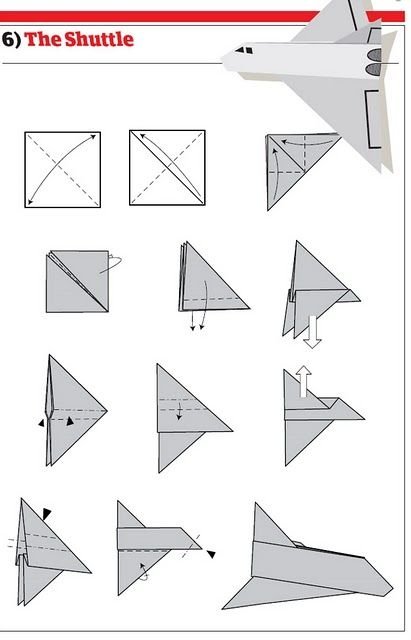|
|
Paper Aeroplane Toy Build Guide
|
Independently, Edmond Hui invented a Stealth Bomber-like paper plane called the Paperang in 1977, based on hang glider aerodynamics. Uniquely, it has properly controlled airfoil sections, high aspect ratio wings, and a construction method designed to allow the builder to vary every aspect of its shape. It was the subject of a book, "Amazing Paper Airplanes" in 1987, and a number of newspaper articles in 1992. It is ineligible for most paper plane competitions due to the use of a staple, but it has extremely high gliding performance exceeding glide ratios of 12 to 1 with good stability.
In 1975, origami artist Michael LaFosse designed a pure origami (one sheet; no cutting, glue or staples...) flying wing, which he named the "Art Deco Wing".
Though its aerodynamic form mimics some hang glider and supersonic airfoils, its invention evolved from exploring the beauty of folded paper first. Its glide ratio and stability are on a par with many of the best paper wing constructions that use glue, tape or staples. This design was first published in 1984 in the book "Wings and Things", by Stephen Weiss, St. Martin's Press.
Although it is a common view that light paper planes go farther than heavy ones, this is considered to be untrue by Blackburn. Blackburn's record-breaking 20-year-old paper plane was based on his belief that the best planes had short wings and are "heavy" at the point of the launch phase in which the thrower throws the paper plane into the air, and at the same time longer wings and a "lighter" weight would allow the paper plane to have better flight times but this cannot be thrown hard with much pressure into the air as a "heavy" weighted launch phase. According to Blackburn, "For maximum height and for a good transition to gliding flight, the throw must be within 10 degrees of vertical" — which shows that a speed of at least 60 miles per hour (about 100 kilometers per hour) is the amount needed to throw the paper plane successfully.
|
|









